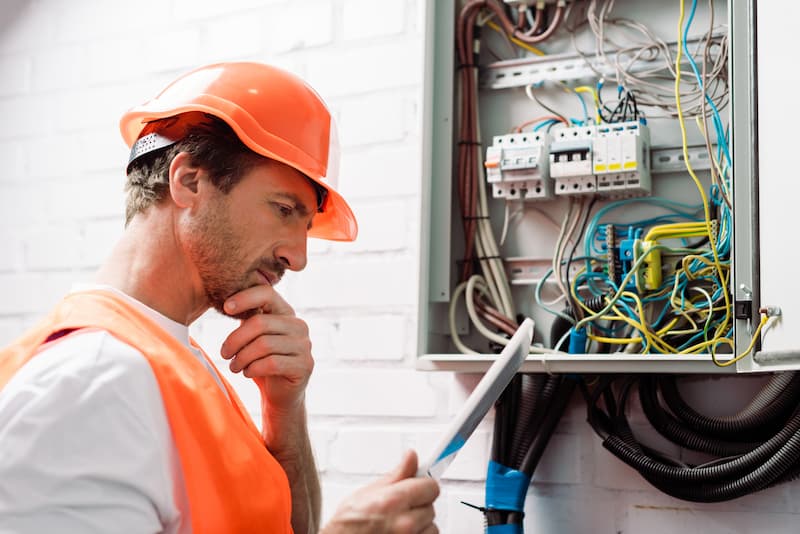Dedicated technical support for electrical industry innovations.
Dedicated technical support for electrical industry innovations.
Blog Article
Leading Tips for Effective Electric System Troubleshooting
Repairing electric systems needs a methodical technique, grounded in a detailed understanding of electric concepts and safety and security methods. The subtleties of reliable fixing expand past simple technological understanding; recognizing exactly how to record findings and prioritize safety can dramatically affect results.
Understand the Basics
Understanding the basics of electrical systems is necessary for efficient troubleshooting, as a solid structure enables technicians to diagnose and settle issues a lot more efficiently. A comprehensive grasp of electrical principles, such as voltage, present, resistance, and power, is crucial in identifying the origin creates of problems. Voltage is the electrical potential distinction that drives existing via a circuit, while resistance opposes the flow of present, impacting the overall capability of the system.
Experience with circuit elements, including resistors, capacitors, diodes, and switches over, is likewise paramount. Each part plays a distinct role in circuit behavior and can impact efficiency when malfunctioning. In addition, recognizing series and parallel circuit setups is important, as these setups influence the distribution of voltage and current within the system.
Furthermore, knowledge of safety and security methods is indispensable. Technicians should understand possible risks, such as shock and short circuits, to apply secure troubleshooting techniques. By understanding these foundational principles, technicians enhance their ability to carry out effective diagnostics and repair work, eventually resulting in boosted performance and integrity of electrical systems. This fundamental expertise is the keystone of successful repairing ventures.
Gather Necessary Devices
Efficient troubleshooting of electric systems needs the best collection of tools to detect and deal with problems properly. A well-appointed specialist can considerably enhance efficiency and effectiveness in determining problems. Necessary devices include a multimeter, which gauges voltage, present, and resistance, permitting exact assessments of electric parts. Clamp meters are likewise useful for gauging present without disconnecting the circuit, making sure security and benefit.
Additionally, insulated hand devices such as screwdrivers, pliers, and wire strippers are vital for securely manipulating electrical links. It is likewise a good idea to have a circuit tester handy to confirm the presence of voltage in electrical outlets and cables. For more facility systems, a thermal imaging video camera can assist detect overheating parts, suggesting prospective failings.

Comply With a Systematic Strategy
Having actually gathered the suitable tools, the next action in fixing electric systems is to click for more info adhere to an organized method. A methodical approach makes sure that service technicians can recognize mistakes successfully and accurately, reducing downtime and preventing unneeded repair work.
Begin by reviewing the system's schematic layouts and specifications. Comprehending the layout and operational criteria will provide context for detecting problems. Next off, separate the problem area by utilizing a process of elimination. This entails monitoring each part systematically, beginning from the source of power and working towards the load.
Use testing tools, such as multimeters and oscilloscopes, to collect objective information about voltage, current, and resistance at different factors within the system. This empirical proof will certainly direct your troubleshooting efforts and help to confirm or get rid of prospective root causes of failing.
Additionally, think about ecological variables that might influence the system's efficiency, such as temperature level variations or moisture access. A thorough evaluation of circuitry, links, and parts will certainly make sure that all possibilities are represented.
Paper Your Searchings For
Detailed paperwork is vital in the fixing process of electric systems. Precise records boost the effectiveness of identifying recurring problems and assist in interaction amongst employee. Each finding ought to be carefully noted, consisting of signs and symptoms observed, tests performed, and the results of those examinations. electrical system troubleshooting. This practice not only help in understanding the origin cause of the problem yet likewise acts as a recommendation for future troubleshooting efforts.

Additionally, maintaining a go log of components changed or repair services carried out is important. This information supports supply management and can help evaluate the durability and reliability of details components.
Inevitably, the documentation procedure need to be complete yet succinct, making it possible for very easy retrieval and evaluation - electrical system troubleshooting. By prioritizing in-depth paperwork, specialists can develop a useful knowledge base that not just aids in current troubleshooting however likewise encourages future maintenance initiatives, therefore improving overall system reliability

Prioritize Safety Procedures
Acknowledging the fundamental threats related to electrical systems is vital for guaranteeing safety and security throughout troubleshooting. Electric shock, burns, and tools damage are just a few of the prospective hazards that specialists face. Focusing on precaution is not only a legal obligation but additionally an ethical imperative that safeguards both the specialist and the surrounding environment.
Before starting any type of troubleshooting job, specialists should don proper individual safety tools (PPE), including protected handwear covers, safety and security glasses, and flame-resistant clothing. Guaranteeing that the workplace is completely dry and devoid of find more clutter can substantially reduce the threat of accidents. It is vital to de-energize circuits prior to starting any type of work, validating that they are not live via the usage of a multimeter or voltage tester.
Establishing clear communication protocols with staff member is additionally crucial; this ensures that everyone is aware of potential hazards and the status of the electrical system being dealt with. Having an emergency situation reaction plan in area can verify vital in the occasion of an event. By prioritizing precaution, professionals can successfully reduce dangers and foster a safer office.
Final Thought
Effective electric system repairing counts on a detailed understanding of fundamental concepts and a methodical approach. By collecting vital tools, sticking to organized assessment strategies, and thoroughly recording findings, the troubleshooting procedure comes to be a lot more efficient and reliable. Focusing on precaution makes certain the wellness of people included and the integrity of the electric system. Implementing these methods will enhance the fixing experience, leading to quicker resolutions and enhanced functional efficiency in electric systems.
Report this page